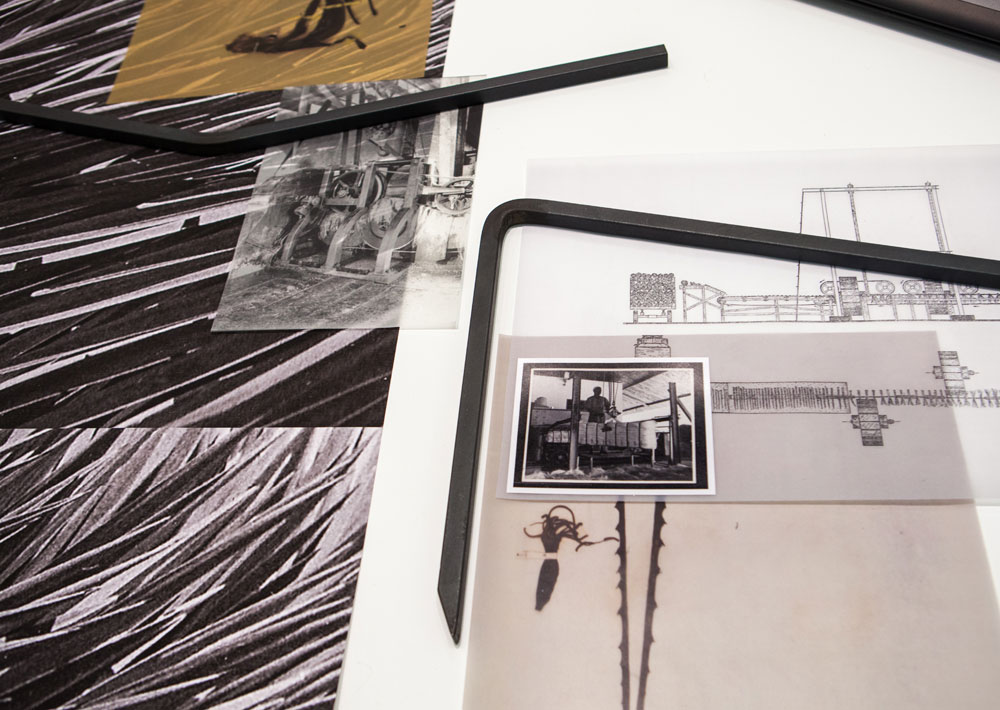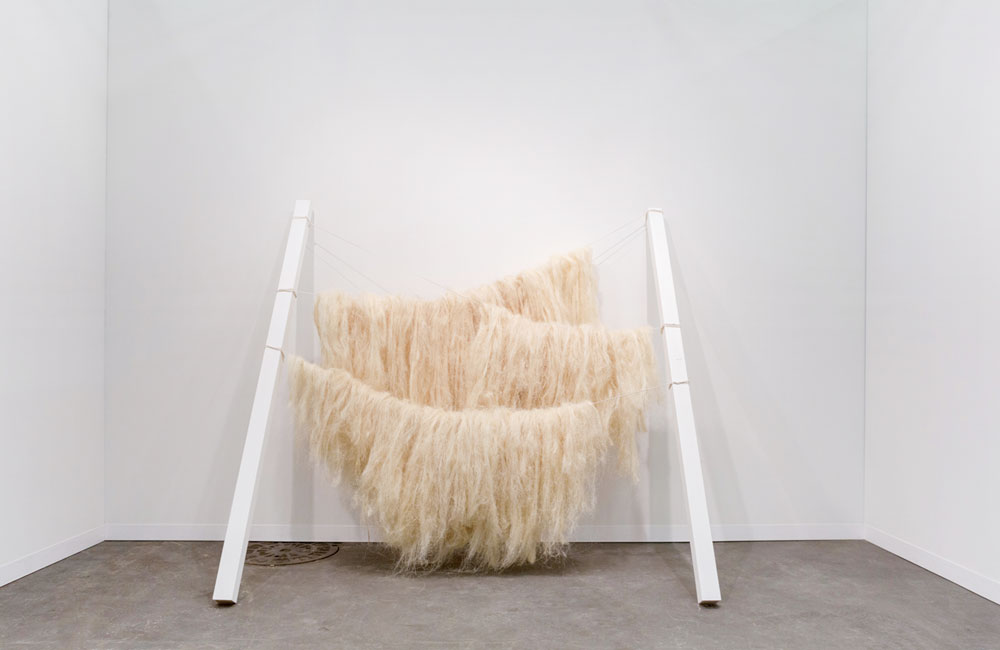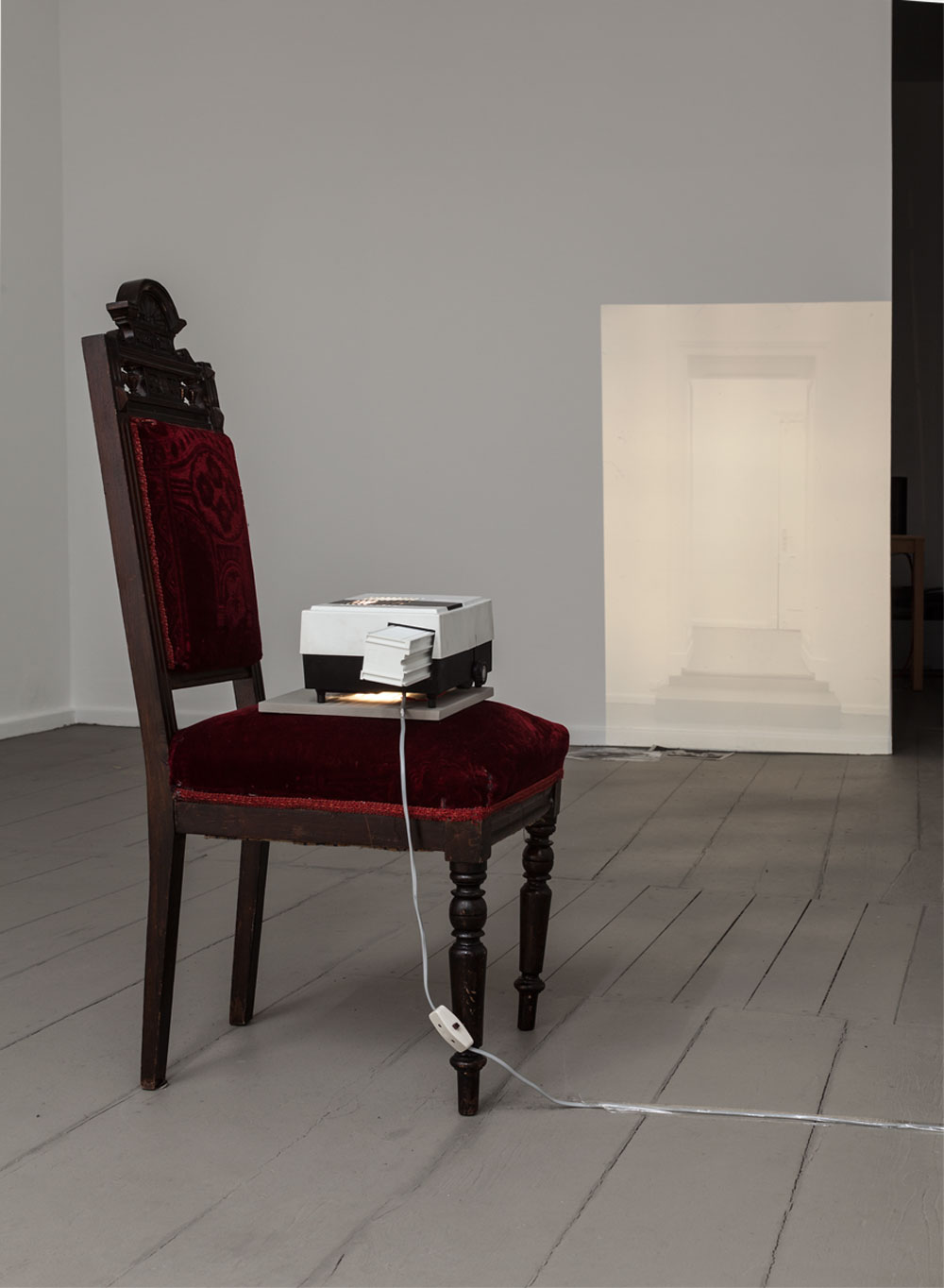Kapwani Kiwanga is a storyteller, and she likes to encourage others to tell stories, too. In Kinjiketile Suite (2015–16), shown at La Ferme du Buisson, in Noisiel, just east of Paris, she encouraged visitors to engage in “oral exchange” with plants attributed with supernatural powers of protection during the Maji Maji Rebellion of 1905 to 1907 in German East Africa.
Kiwanga has studied anthropology, comparative religion and art, in Montreal and Paris, and takes on the role of researcher in her practice, which uses video, photography, archival research and found objects, among other techniques. Her products are not in a traditional form—they represent, she says, “different types of intelligence: sensual, temporal, special.” This plurality is about mobility and flux. “It is the way I see life. I like to look at cycles and things that are changing, constantly moving, and pockets of knowledge and how we move between them and are richer for it.”
Growing up in multicultural Hamilton and Brantford, Ontario, “gave me a thirst and desire to visit other places,” she says. For Kiwanga, this lived experience of Canadianness trumps more fabricated nationalistic elements, such as a relationship to nature or founding narratives, which can distance Canada from its reality as colonial project.
In Brantford, which is bordered by the Six Nations of the Grand River, the largest First Nations reserve in Canada, “you have the remnants,” Kiwanga says, “[of] the racism that has been upheld and handed down. The question of Canada being a colonial experiment leads to questions of narrative and counternarrative, which are important. But they are often dialoguing with magical, scientific, sensual, domestic—all of these tonalities and textualities.”
Whether investigating Sun Ra’s relationship to the cosmos as well as to friends and acquaintances in The Sun Ra Repatriation Project (2009), or investigating the gift-giving practices of nations and the layered history of the United Nations in the Armory Show–commissioned Secretary’s Suite (2016), Kiwanga questions hegemonic accounts of history, “looking at things that have fallen between the cracks or are on the edges—things that are supressed or repressed—and trying to give them a space to breathe.”
If Canadianness informs Kiwanga’s practice, it is perhaps in her curiosity about other places, peoples and stories. And an interest in resisting compartmentalization and authority: “[It’s] this idea of trying to dissolve hierarchies, not only between disciplines, but also between popular knowledge and oral histories and vernacular culture and what is more institutional and ‘authoritative.’ The goal is to put things on the same level, so that they can be in dialogue.”
This spotlight article, adapted from the Fall 2016 issue of Canadian Art, has been generously supported by the RBC Emerging Artists Project.
 Kapwani Kiwanga, Decortication Table, 2016. Detail. Mixed-media installation, 1.60x 1.2 m. Courtesy Galerie Tanja Wagner, Berlin/Galerie Jérôme Poggi, Paris.
Kapwani Kiwanga, Decortication Table, 2016. Detail. Mixed-media installation, 1.60x 1.2 m. Courtesy Galerie Tanja Wagner, Berlin/Galerie Jérôme Poggi, Paris.
 Kapwani Kiwanga, Drying field, 2016. Painted wood, cotton string and sisal fiber, 2.5 x 1.8 m. Courtesy Galerie Tanja Wagner, Berlin/Galerie Jérôme Poggi, Paris.
Kapwani Kiwanga, Drying field, 2016. Painted wood, cotton string and sisal fiber, 2.5 x 1.8 m. Courtesy Galerie Tanja Wagner, Berlin/Galerie Jérôme Poggi, Paris.
 Kapwani Kiwanga, A Memory Palace (Winter garden). Detail. 2015. 4-channel sound installation, floral arrangement in ceramic bowl, ink-jet prints and slides. Courtesy Galerie Tanja Wagner, Berlin.
Kapwani Kiwanga, A Memory Palace (Winter garden). Detail. 2015. 4-channel sound installation, floral arrangement in ceramic bowl, ink-jet prints and slides. Courtesy Galerie Tanja Wagner, Berlin.

 Kapwani Kiwanga, A Memory Palace (Conference Room), 2015. 4-channel sound installation, table, chair and slides. Courtesy Galerie Tanja Wagner, Berlin.
Kapwani Kiwanga, A Memory Palace (Conference Room), 2015. 4-channel sound installation, table, chair and slides. Courtesy Galerie Tanja Wagner, Berlin.







